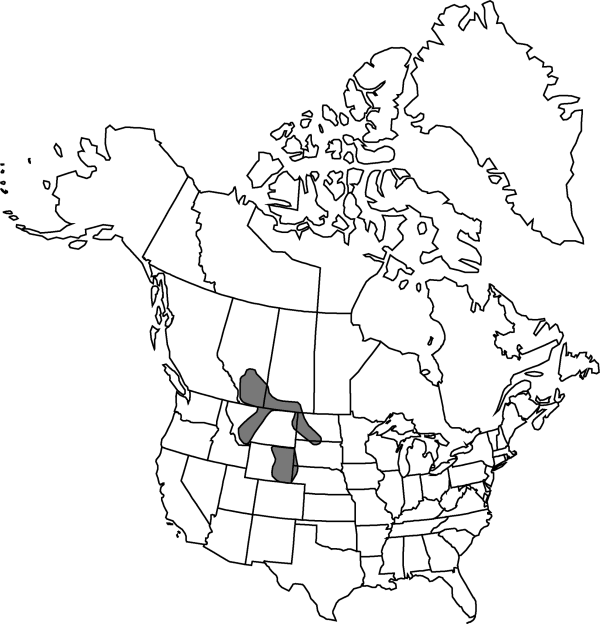Atriplex gardneri var. aptera
Great Basin Naturalist 55: 326. 1995.
Subshrubs, dioecious or sparingly monoecious, mainly 2–5 dm. Stems mainly from a basal crown. Leaves deciduous or tardily so, alternate or proximal ones opposite, sessile or subsessile; blade green to yellow-green, oblanceolate to elliptic or spatulate, 15–40 × 6–12 mm, 2–6 times longer than wide. Staminate flowers yellow, in glomerules 3 mm thick, in terminal or axillary spikes or spicate panicles to 12 cm. Pistillate flowers in spicate panicles 8–25 cm. Fruiting bracteoles sessile or on stipes to 5 mm, body basically ellipsoid, bearing 4 deeply lobed lateral wings or rows of flattened tubercles to 4 mm high, 4–8 mm and as wide, apex 1.5 mm, with 2–4 lateral smaller teeth, wings, sometimes vestigial, rarely absent. 2n = 36.
Phenology: Flowering summer–fall.
Habitat: Saline, often moist, fine-textured substrates
Elevation: 400-1100 m
Distribution

Alta., Sask., Mont., Nebr., N.Dak., S.Dak., Wyo.
Discussion
Atriplex gardneri var. aptera is a Great Plains-Steppe endemic.
The concept of Atriplex aptera is based on recurring and at least partially stabilized introgressant populations derived through hybridization between A. gardneri and A. canescens. Hence, the plants do not form a traditionally conceived taxon in the sense of being monophyletic. They are, however, of frequent occurrence, evidently fertile and long lived, and are taxon-like in distribution. While intermediate in many ways, they are habitually most similar to A. gardneri but bear yellow staminate flowers and the fruiting bracteoles are either winged as in A. canescens or the tubercles are aligned in four rows. They tend to occupy similar saline habitats as those occupied by A. gardneri. Despite the origin of the A. aptera material, and regardless of its local abundance, it does not appear to overwhelm either of the parental species. Staminate specimens of A. aptera are difficult, if not impossible, to distinguish from A. gardneri var. gardneri or A. canescens.
Selected References
None.